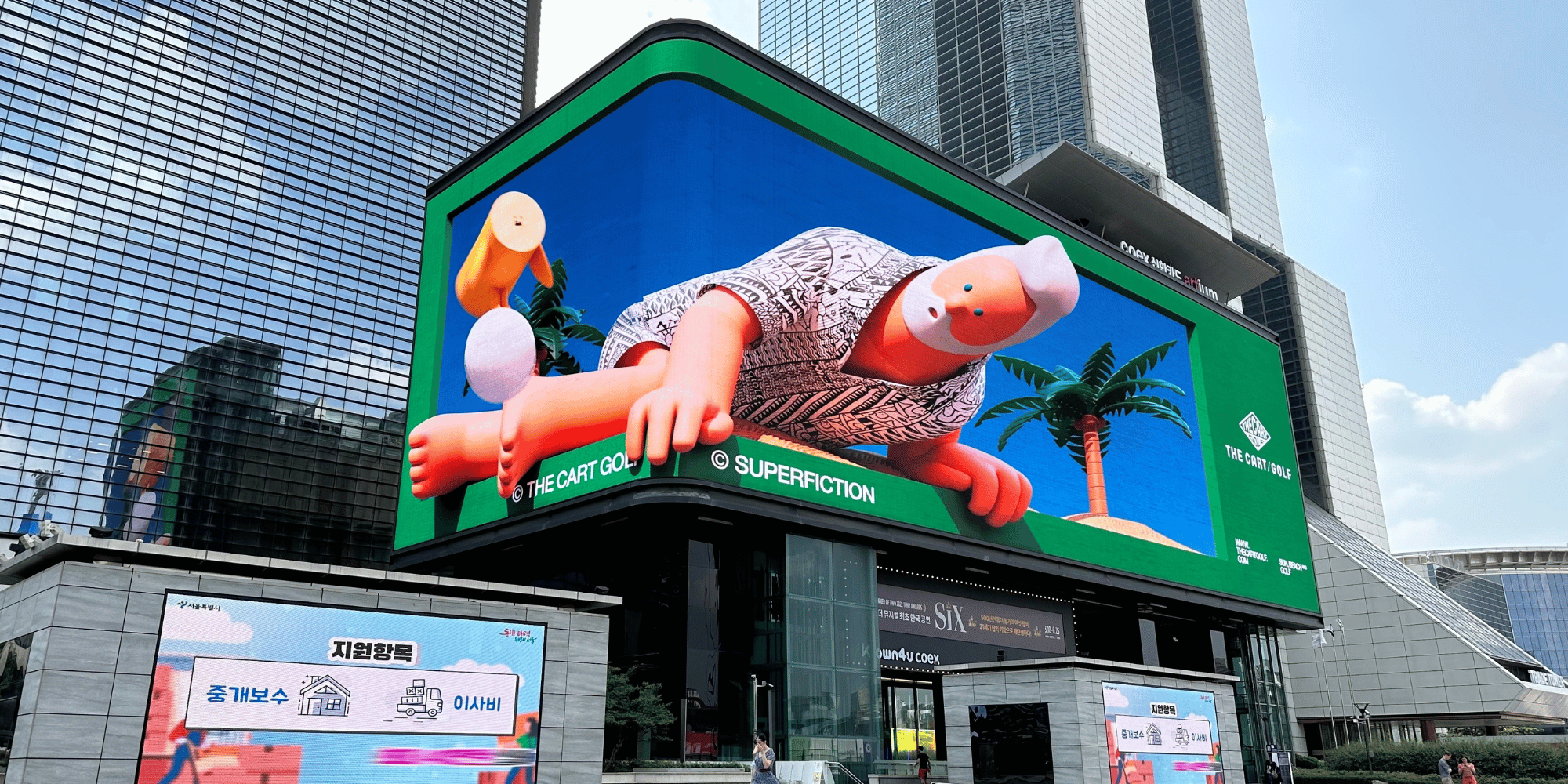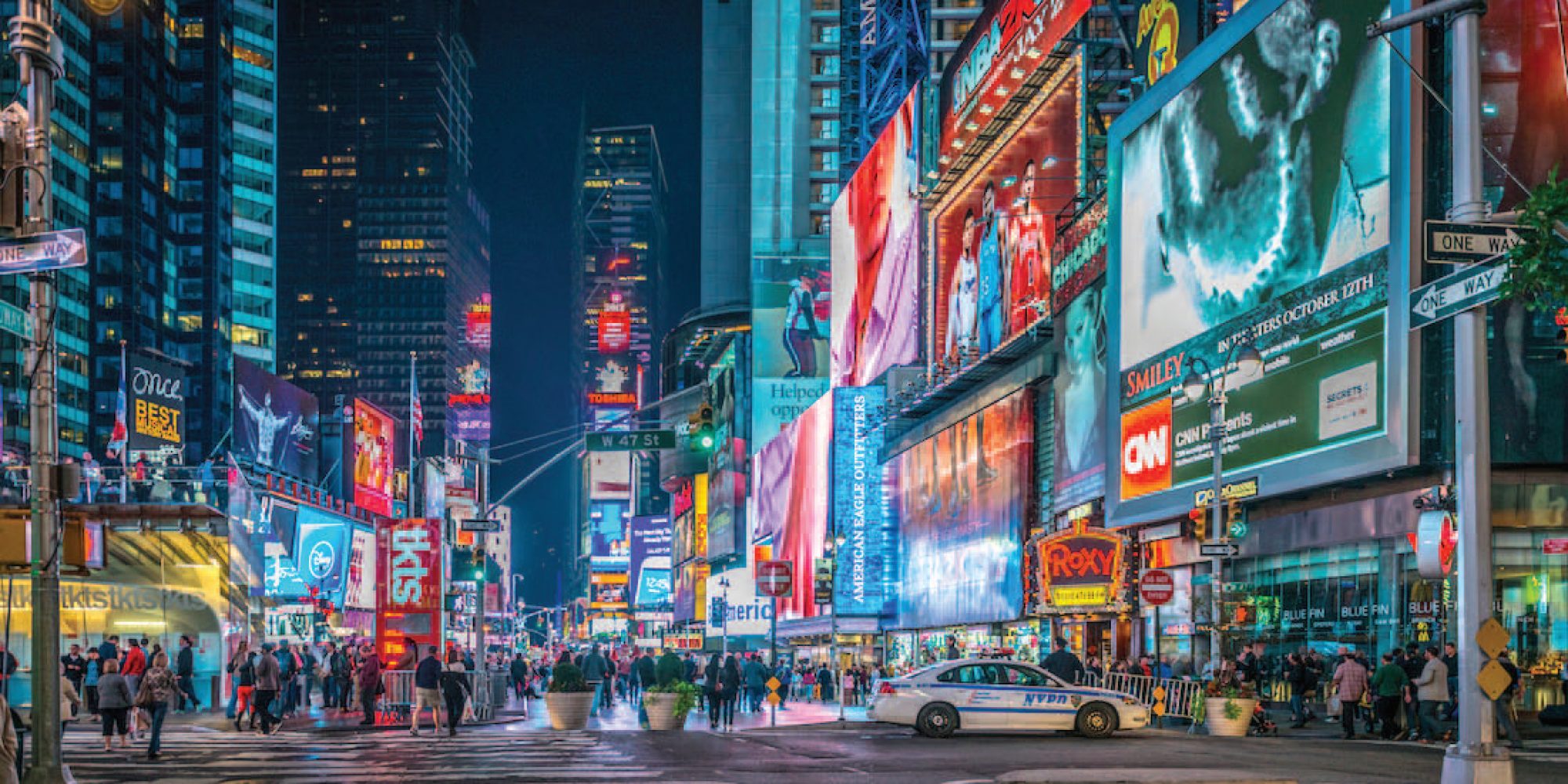
The Rise of 3D Billboards in the City
In the heart of Manchester’s Spinningfields district, passersby have recently been stopping mid-stride, phones raised, faces lit up not by screens but by the dazzling light of something far more tangible: a new 3D billboard that’s redefining how outdoor advertising captures attention. Set among the glass and steel of one of the city’s busiest commercial areas, the screen’s hyper-real visuals seem to burst beyond the frame, transforming ordinary city movement into a cinematic experience.
3D billboards are quickly becoming the showstoppers of out of home advertising. They create a moment of awe that’s hard to scroll past or ignore, the kind of engagement that’s gold dust in today’s ad-saturated world. These installations blend advanced motion design with physical architecture, turning everyday advertising spaces into immersive brand showcases.
Why 3D Billboards Work So Well
The success of 3D billboards lies in their stopping power. Traditional outdoor advertising formats like static posters and even digital displays rely on visibility and repetition. 3D screens take it a step further, using depth, light, and movement to create illusions that feel genuinely alive. They tap into a universal human instinct to look twice when something defies expectation.
The Spinningfields screen is a perfect example. Positioned on a high-footfall route that links offices, retail and nightlife, the installation instantly became a landmark. Commuters began sharing clips online, and within days, the display had racked up thousands of organic social impressions. The mix of digital innovation and prime city placement created a loop of physical and online engagement, with the public doing much of the amplification themselves.
What makes 3D billboards particularly powerful is that they bridge the physical and digital worlds. A single clip filmed by a passerby can become a viral post seen by millions. That blend of spectacle and shareability gives brands a far greater return than a standard digital display.
The Effect on Brands and Audiences
For advertisers and media agencies, 3D billboards represent a new chapter in creative storytelling. Instead of shouting for attention, they invite audiences into an experience that feels crafted, cinematic and memorable. When executed well, they elevate brand image and place it in the cultural conversation.
In Manchester, brands that have embraced this new format have seen clear value in audience recall and online traction. A well-timed 3D reveal during a product launch or cultural moment can drive brand buzz for weeks. Beyond the immediate impact, these installations also reinforce the premium positioning of outdoor advertising itself, proving that OOH is far from static – it’s evolving with technology, creativity, and audience behaviour.
The Future in Motion
As cityscapes across the UK evolve, more 3D billboards are expected to rise in key retail, transport, and entertainment hubs. Manchester’s example is only the beginning. From Piccadilly Circus to Liverpool ONE, brands are beginning to explore how immersive visual storytelling can transform how people see and feel about their campaigns.
In the era of fleeting attention spans, 3D billboards have brought wonder back to outdoor advertising. They remind us that the public realm is still a place where stories can unfold in real life, where a single moment on the street can capture the world’s attention.


